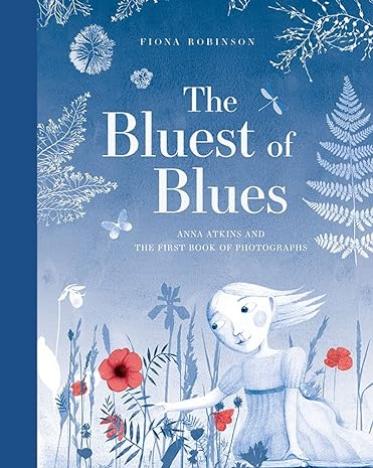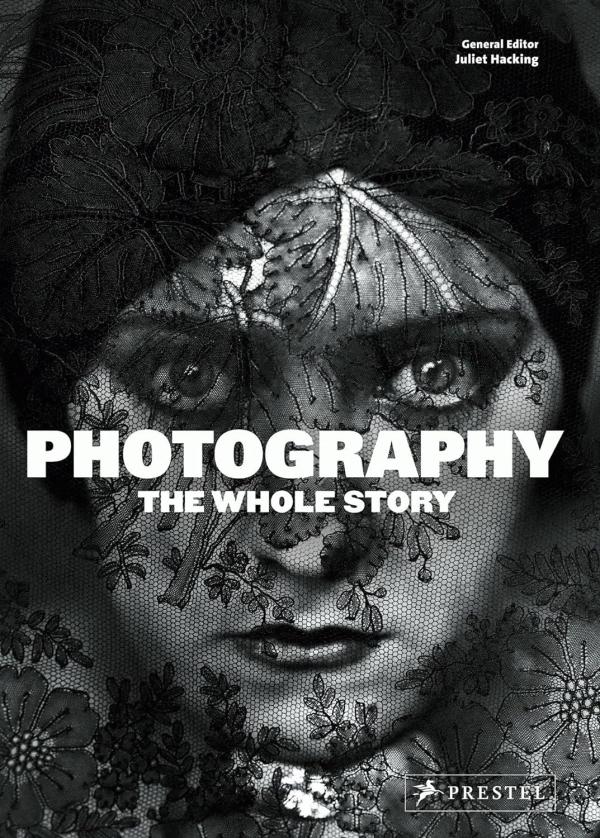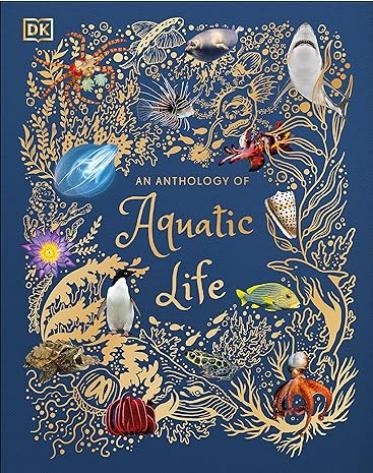Anna Atkins was a pioneer in the worlds of both art and science. In 1843, she created botanical cyanotypes and bound them into a book—the first-ever book to feature photographic images. Our list features books that highlight several aspects of Atkins’ life and art. To start, you’ll see her cyanotypes and read her biography. Then, you’ll dive into the subjects that captivated Atkins’ curious mind: seaweed, shells, and plants. All of the books are full of creative inspiration!

You might also like these!
This 72-page volume includes dozens of reproductions of Atkins’ cyanotype prints. Most of the prints are ferns and algae, but each piece is unique in its own right. It also includes a brief biography of Atkins and several quotes from her. Children of all ages and adults will enjoy paging through Atkins’ art in this book.
This award-winning book is the only picture book to tell the story of Anna Atkins. The story starts with Atkins’ childhood, the scientific influence of her father, and her curiosity about the natural world. It tells the story of Atkins’ first experiments with cyanotypes and her work in cataloging her large collection of specimens. The blue-washed illustrations are one of the best parts of this book. They add an element of magical whimsy! A few of Atkins’ cyanotypes are also shown in the book. Read it with upper elementary kids.
This book is for serious artists and amateurs alike. It’s divided into two parts. The first provides details about the cyanotyping process. There are step-by-step instructions for several processes, photographs of most of the steps, and troubleshooting tips. The second part highlights more than two dozen contemporary cyanotype artists. The book provides an incredible amount of information about this art form and 300+ pages of visuals that are worth studying. Children 12+ can page through this one on their own.
Tracing the art of photography back 200 years, this book showcases the technology and the artists that made such a rich history possible. There are 50 biographies of photographers beginning with William Henry Fox Talbot, the man who first prompted Atkins to get involved with photography. Anna Atkins is also mentioned briefly. The book progresses, covering 20 years of history in each section, until it comes all the way to current times and camera phones. This book has a great balance of photography examples and engaging text. Page through it with kids ages 10 and up.
Here’s another comprehensive volume covering the history of photography. This one is even more detailed, coming in at 576 pages. It covers photography-related developments from 1839 to the present day. Timelines, artistic analysis, and more than 500 photographs are included. This one is best for teens and adults.
This ocean encyclopedia describes more than 100 of the plant and animal life forms of the deep blue. It’s filled with fascinating facts and eye-catching illustrations. There are photographs, too, so kids can get an up-close look at these life forms in action. They’ll see everything from plankton to sea moss to alligators. Read this one with early elementary kids.
Anna Atkins found her artistic inspiration in nature and your kids can do the same! This book provides instructions for 22 craft projects inspired by natural and recycled materials. They’ll create dragonfly suncatchers, cardboard cacti, and rock pets. Best of all, each project can be completed in just four steps. That gives kids the ultimate freedom to create and explore! And, each project is beautifully illustrated. It’s a must-have for creative kids of all ages!
Ferns and algae were the most important subjects of Anna Atkins’ work but our planet is filled with hundreds of more species of plants. Kids can read about 100 of them in this illustrated guide! It combines colorful illustrations with vibrant photographs to explain details about each plant. There’s also plenty of white space so readers ages 10+ can confidently read through the book on their own. Even preschoolers will enjoy looking at the photographs and hearing an adult read all of the interesting facts.
Nature is filled with repeating shapes and patterns. This book uses bright illustrations to point out the beauty of these repetitions! The first two pages offer a brief overview. Then, kids jump into specific categories to look for shapes and patterns. They’ll examine leaves, tree bark, flowers, nuts, and more! Each page is overflowing with beautiful illustrations. On the final pages, readers are invited to look at specific shapes and patterns across the groups and see how many they can categorize. Read this one with elementary kids.
This book was first published by Ernst Haeckel, a pioneering German scientist, in 1904. It presents a series of scientific plates and illustrations that display Haeckel’s research and discoveries. These drawings are timeless, offering a unique look into botanical art that was produced in the years following Atkins’ cyanotypes. Anyone who has an interest in science or art will appreciate this book.
Anna Atkins saw the beauty of seaweed, and this book invites readers to examine that beauty up close. The author has used a flatbed scanner to reproduce more than 200 types of seaweed from the coasts of California and Maine. Her images are similar to Atkins’ prints, but they’re bold and colorful. There’s also quite a bit of scientific information in this book. Kids 5-10 years old will enjoy the images while older kids will be able to understand the scientific details.
If you’d like even more information about seaweed, this is the book for you! It divides seaweed into three main groups and provides an in-depth description of each subspecies. The pages are filled with illustrated diagrams, colorful photography, and tons of information. A small section is devoted to Anna Atkins, too. Some of the information might be too difficult for non-scientific minds to grasp, but curious tweens and teens will love to page through this one.
Here’s a book that discusses a wide range of plants and connects them to important applications in science, engineering, and technology. For example, tumbleweeds, sycamore seeds, and the Venus flytrap are all connected to the science of robotics. The illustrations in this book are bold, busy, and comical. Each page includes a few blocks of text so kids will stay engaged throughout the book. Read this one with kids 7-12 years old.
This book uses delicate watercolor illustrations to guide readers in identifying the treasures they find at the beach. There’s the oyster, the conch, the whelk, and many others. A brief description and a few interesting facts are included about each treasure. There’s plenty of white space too, which makes the book feel relaxing and peaceful. Page through this one with kids ages 8+.
Take Anna Atkins’ inspiration and cook with it! This cookbook features 50 recipes focused on sea vegetables and seaweeds like wakame, kombu, agar, samphire, and nori. There are soups, salads, pizza, burgers, and even ice cream! Get the kids in the kitchen, be bold, and try a recipe or two!



























